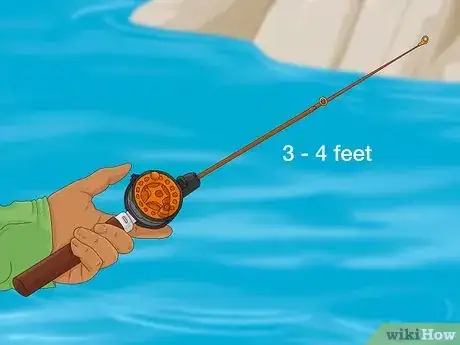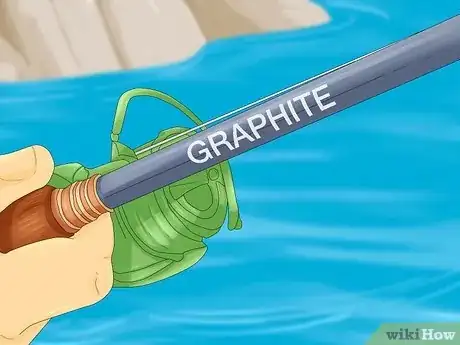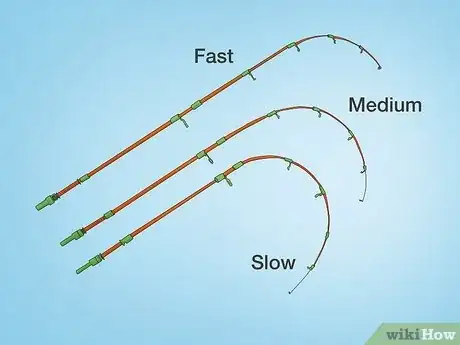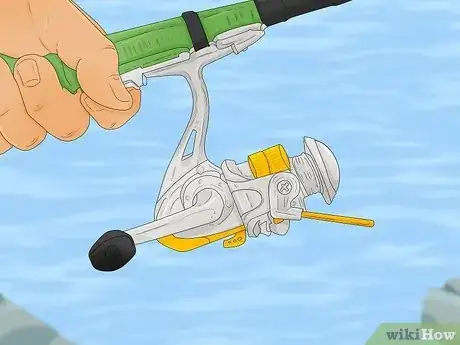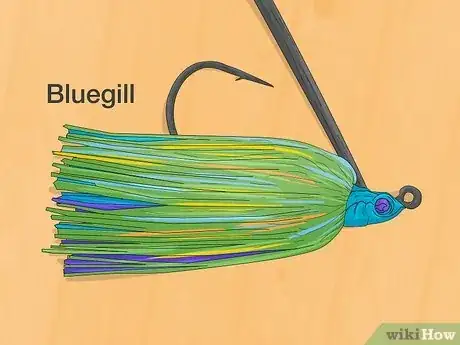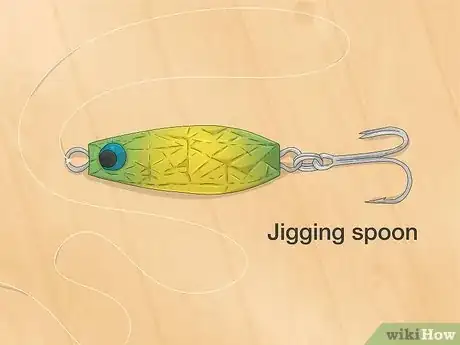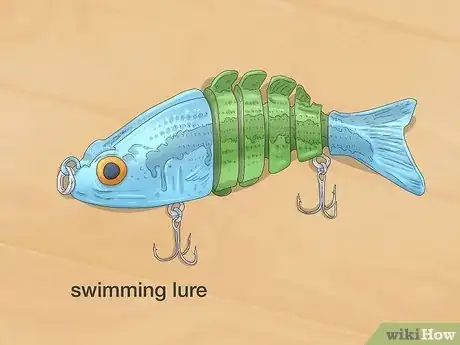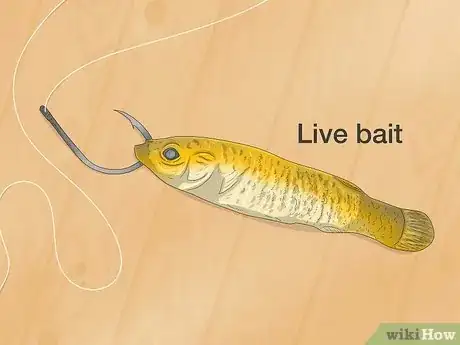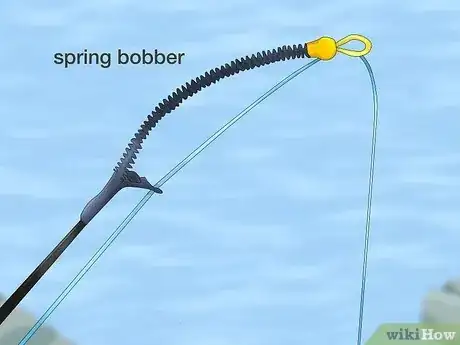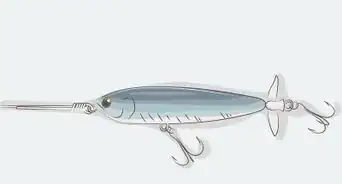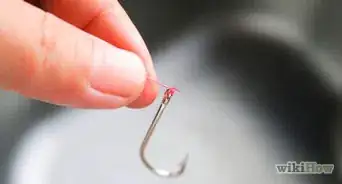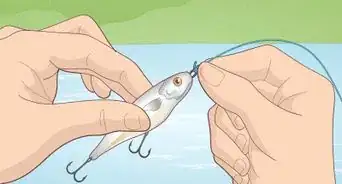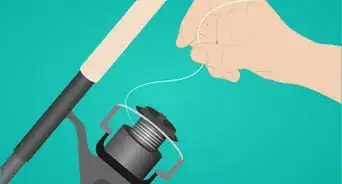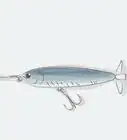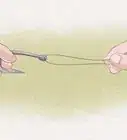wikiHow is a “wiki,” similar to Wikipedia, which means that many of our articles are co-written by multiple authors. To create this article, 9 people, some anonymous, worked to edit and improve it over time.
This article has been viewed 62,734 times.
Learn more...
When their favorite lakes and streams are covered by ice, some fishermen choose to put away their tackle for the winter. Other anglers, however, exchange their regular rods for ice fishing tackle to pursue their quarry through holes drilled through the ice. Successful ice fishing requires some adjustment to the tackle and techniques you use for open water fishing, starting with the type of rod you use and how you rig it. The following steps describe how to select and rig an ice fishing rod and reel.
Steps
Choosing an Ice Fishing Rod
-
1Choose a rod shorter than you use for open water fishing. While you can ice fish with a rod the same length as you normally use for open water fishing, most fishermen prefer to use a shorter rod; since baits are dropped through holes bored in the ice rather than cast, the extra length isn't necessary. A shorter rod is also an advantage in the tight quarters of most ice fishing shacks. A typical ice fishing rod is 3 to 4 feet (0.9 to 1.2 m) in length and thinner overall than a rod used for open water fishing.
-
2Choose a sensitive rod. Because fish move more slowly in cold water, they usually do not hit baits or artificial lures as aggressively as they do in warmer water. You'll want a rod made from graphite or boron fiber to better help you sense the light taps you're likely to feel when a fish takes your bait.Advertisement
-
3Choose the right rod action for your presentation. The right rod action can help you present your bait or lure more effectively when ice fishing. A fast tip will impart more action to your lure when vertical jigging, which can be helpful on days when fish are more aggressive, typically toward the end of winter as fish forage more to prepare for spring spawning. A light or slow action will produce a subtler, more fluid action better suited to more lethargic fish. It can be helpful to use both kinds of rods and switch between them as necessary.
Choosing the Reel and Line
-
1Choose a reel suited for ultralight fishing. Because fish are cold-blooded, they are usually less active during the winter months than in summer and therefore do not put up as much of a fight as in warmer weather, so it usually isn't necessary to use heavy lines when ice fishing. A spinning or spincast reel with a good quality gear system and drag will work well when ice fishing.
- You may need to use a thinner reel lubricant for ice fishing than for warm water fishing, as thicker lubricants tend to gel in colder weather. (This is the same reason you use a thinner or multi-viscosity oil in your car during the winter.)
-
2Choose a light test or class line. Lines of 2 to 6 pound test (1 to 3 kg class) are usually the best choice for ice fishing. Most ice fishermen spool their reels regular nylon monofilament line, although some favor lines specially designed for ice fishing.
Rigging Your Line
-
1Use tiny jigs for panfish. Bluegill, crappie, and other panfish eat tiny insects and plankton during the winter months. Jigs of 1/16 ounce (1.77 g) or less simulate these tiny food items.
- Some ice fishing jigs more closely resemble the flies used in fly fishing and are called ice flies.
-
2Use tiny spoons for larger game fish species. Spoons wobble and flash their way through the water as they are retrieved, attracting bass, walleye, trout, and pike. Like jigs, they are typically fished in an up-and-down motion when ice fishing.
- Some fishermen take the treble hook off the spoon and attach a short leader in its place, to which they attach a jig. This setup attracts perch and other panfish.
-
3Try swimming lures for a different presentation. Made of metal, swimming lures for ice fishing are thin and flat, with a fluke at one end to give them a swimming motion. The eye of the lure, however, is typically opposite a treble hook in the center of the lure body, with single hooks projecting from the front and rear.
-
4Consider sweetening your lure with some live bait. Although ice fishermen more commonly use live bait when fishing with tip-ups, some add tiny minnows to swimming lures or small pieces of fish underbelly meat to a spoon. The fish meat adds a natural smell and taste that the artificial lure alone can't provide and makes finicky fish more likely to take the bait.
-
5Add a spring bobber for a more fluid lure or bait action. A spring bobber is a small bobber that attaches to the line by means of a spring wound around one of its projections. The bobber's buoyancy helps to smooth out the jerkiness of jigging small jigs, spoons, and swimming lures up and down and also helps detect when fish take the bait. This aspect can be useful when wearing gloves while fishing or in other situations where it's necessary to rely on sight instead of touch to detect when you have a bite.
Warnings
- Beware of newly formed ice when ice fishing. Ice should be frozen hard to a depth of at least 3 inches (7.5 cm) before you step out on it and not be covered with a layer of water or snow or have pressure cracks. Ice tends to be thinner at the shoreline, around rock piles or weed beds, near the mouth of an incoming stream, or over a sub-surface spring.⧼thumbs_response⧽
- Although drowning is a distinct possibility if you should fall through the ice, the greater danger is hypothermia. Your survival time in the water ranges from 20 to 90 minutes, depending on your size and the amount of clothing you're wearing, although your arms will become too numb to help you extricate yourself after only a few minutes. You can increase your chances of survival by carrying an ice pick, gaff, or long knife to spear the ice near the hole to give yourself leverage to pull yourself out, or failing this, pull your arms and legs into your chest. To rescue someone else who's fallen in, use your ice auger, rod, or tow rope from your ice sled to reach the victim and pull him or her to safety.⧼thumbs_response⧽
